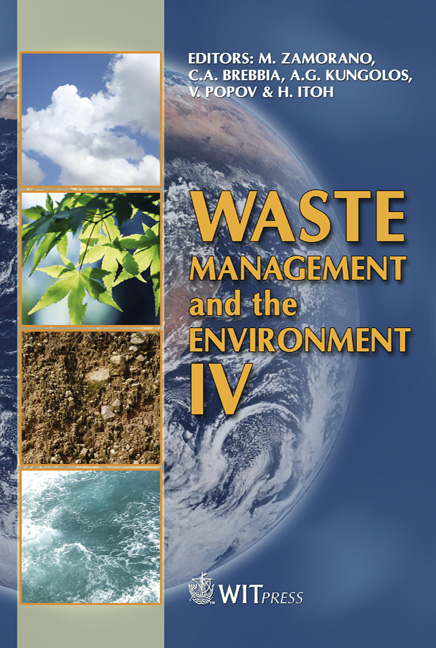Equilibrium Modelling Of Cr (VI) Biosorption By Olive Stone
Price
Free (open access)
Transaction
Volume
109
Pages
10
Page Range
827 - 836
Published
2008
Size
580 kb
Paper DOI
10.2495/WM080841
Copyright
WIT Press
Author(s)
M. Calero, F. Hernáinz, G. Blázquez, M. A. Martín-Lara & G. Tenorio
Abstract
In this study, Cr (VI) biosorption isotherms were investigated depending on temperature by employing batch biosorption technique and using olive stone as sorbent. To analyse the effect of the temperature in the equilibrium of the biosorption process, experiments were carried out by varying the concentration from 10 to 220 mg/L, at three temperatures: 25ºC, 60ºC and 80ºC. The increase in temperature favoured biosorption and reduction processes, thus, for a specific initial Cr (VI) concentration, as temperature increases, the final Cr (VI) concentration that remains in the solution decreases, and the Cr (III) concentration increases. The experimental data were adjusted to Langmuir, Freundlich and Redlich- Peterson models, the Langmuir model being the one that best reproduced the experimental results for all the chosen temperatures. From the results obtained it concluded that the maximum sorption capacity increases as the temperature increases, from a value of 1.728 mg/g at 25ºC to 4.824 mg/g at 80ºC. Similarly, the affinity parameter also increases with temperature, from 0.112 L/mg (25ºC) to 0.472 L/mg (80ºC). Finally, using the values obtained for the constant b of the Langmuir model, the changes in enthalpy, H, free energy, G, and entropy, S, were determined and it obtained that for Cr (VI) the process was endothermic, since the enthalpy had a positive value, and the negative free energy values, ∆G, showed the spontaneous nature of the process and that it was favoured by the increase in temperature. Keywords: biosorption, heavy metals, equilibrium, olive stone, chromium.
Keywords
biosorption, heavy metals, equilibrium, olive stone, chromium.





